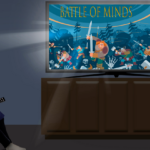Raising kids in a violent world is difficult. Raising them in a high tech world where virtual violence is pandemic is not only difficult, but increasingly complicated. Just what are parents up against, and what can they do about it? The American Academy of Family Physicians (AAFP) says that a growing body of research shows a strong association between the perpetration of … [Read more...] about Onscreen Media Violence in the Battle for Children’s Minds

